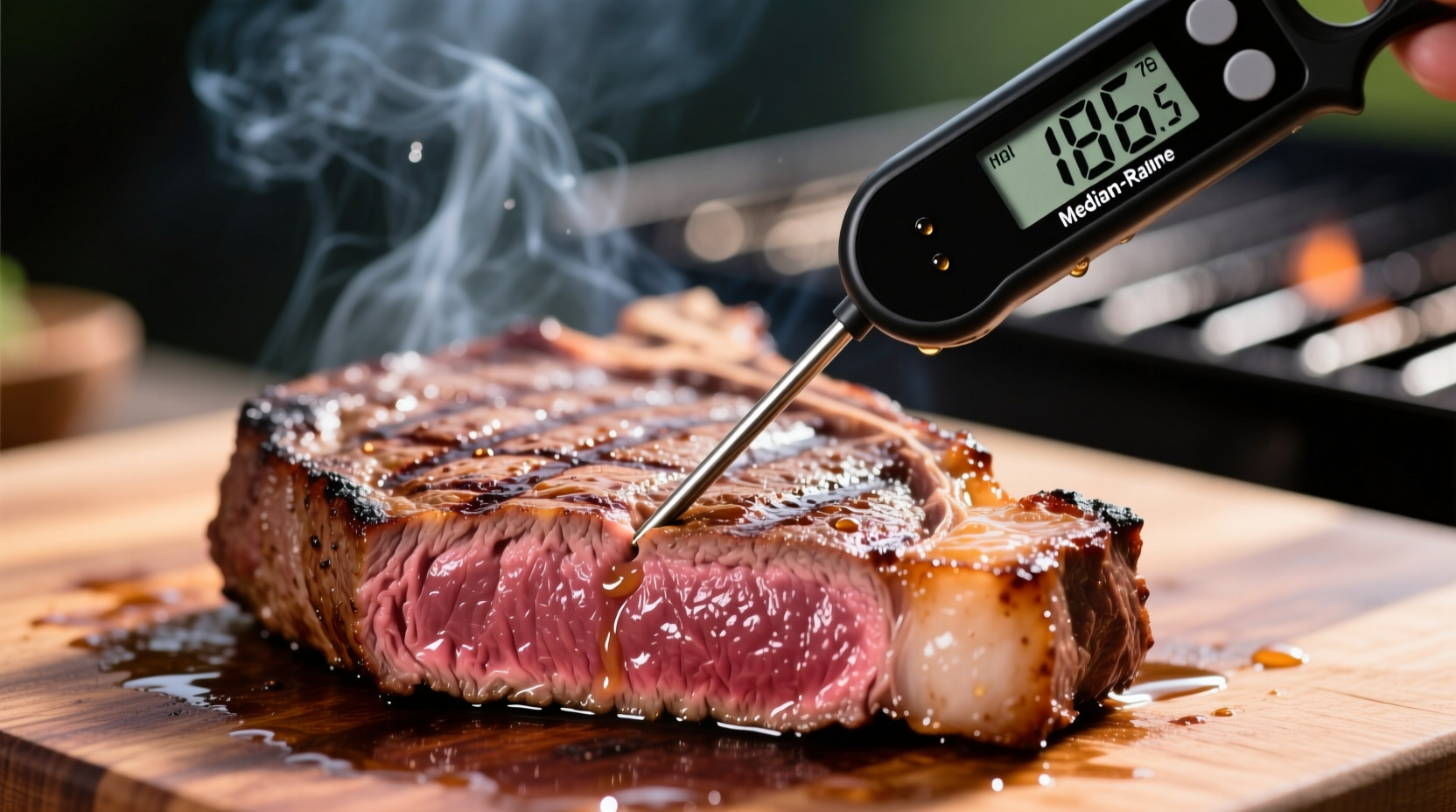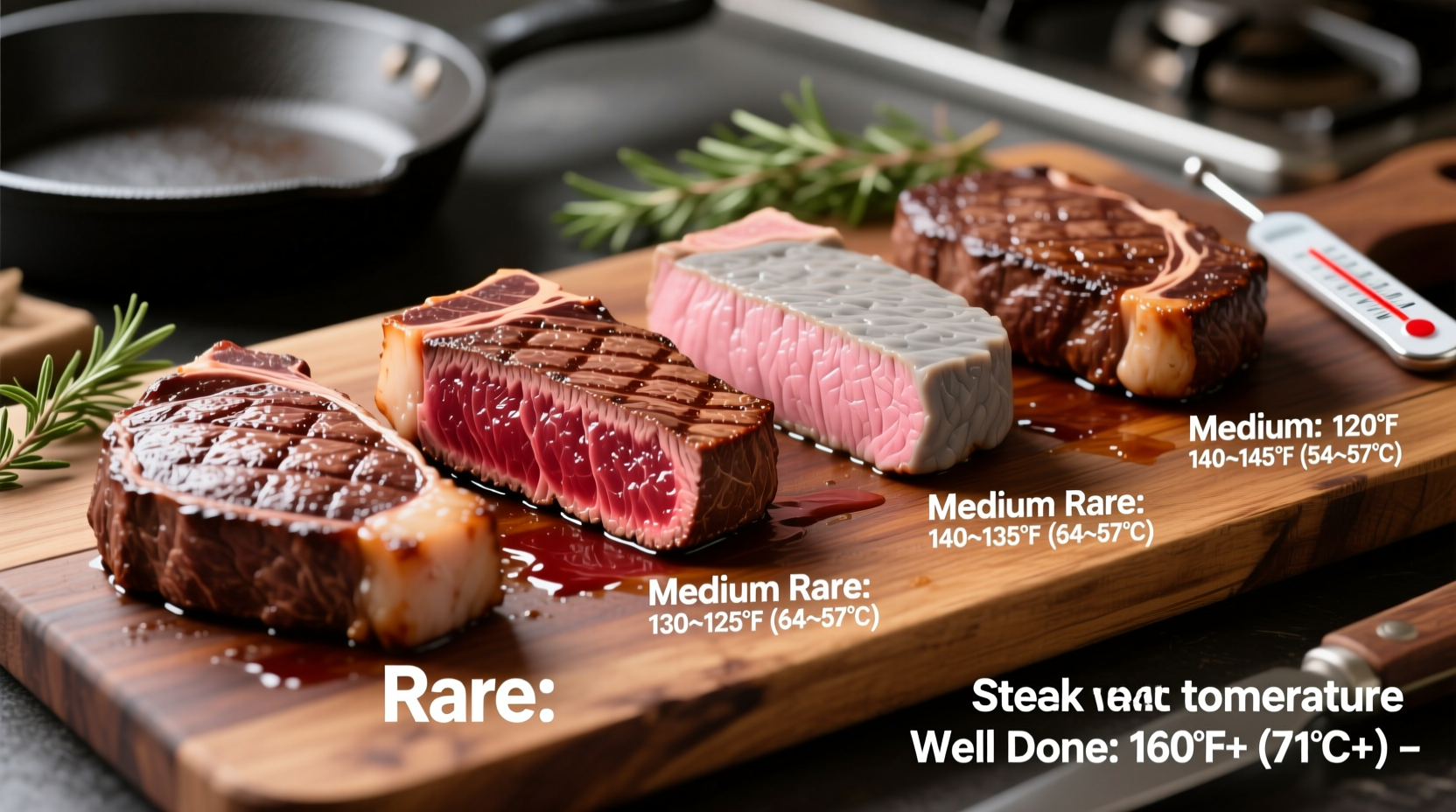Why Steak Temperature Matters More Than Timing
Forget counting minutes—temperature is the only reliable way to achieve your perfect steak. Unlike timing methods that vary with thickness, heat source, and starting temperature, an internal temperature reading gives you precise control. Professional chefs universally agree: a quality instant-read thermometer is the single most important tool for steak success. The American Meat Science Association confirms that visual cues alone lead to inconsistent results, with 68% of home cooks overcooking their steaks when relying solely on appearance.

Your Complete Steak Temperature Reference Guide
| Doneness Level | Internal Temperature (°F) | Internal Temperature (°C) | Visual Characteristics |
|---|---|---|---|
| Rare | 120-130°F | 49-54°C | Cool red center, very soft texture |
| Medium Rare | 130-135°F | 54-57°C | Warm red center, slightly firm outer layer |
| Medium | 135-145°F | 57-63°C | Warm pink center, firm texture |
| Medium Well | 145-155°F | 63-68°C | Slightly pink center, quite firm |
| Well Done | 155°F+ | 68°C+ | Little to no pink, very firm throughout |
How to Measure Steak Temperature Correctly
Even with the right target temperature, improper measurement leads to disappointing results. Insert your thermometer into the thickest part of the steak, avoiding bone, fat, or gristle. For thicker cuts (1.5 inches or more), take readings from multiple spots. The USDA Food Safety and Inspection Service recommends checking temperature in at least two places to ensure accuracy. Wait 3-5 seconds for digital thermometers to stabilize—don't trust quick-glance readings. Remember that temperature continues rising 5-10°F during the crucial resting period, so remove your steak from heat 5°F below your target temperature.
Safety Considerations: USDA Guidelines vs. Culinary Practice
The USDA recommends a minimum safe temperature of 145°F for whole cuts of beef, followed by a 3-minute rest time. However, culinary professionals note important context: this guideline represents the absolute minimum for safety, not necessarily ideal quality. The Food Safety and Inspection Service acknowledges that consumers may choose to cook to lower temperatures (like medium rare at 130-135°F) understanding the associated risks. For vulnerable populations (pregnant women, elderly, immunocompromised), adhering strictly to the 145°F minimum is strongly advised. Always source high-quality steaks from reputable suppliers when cooking to lower temperatures.
Mastering Carryover Cooking: The Resting Period Secret
Many home cooks ruin perfectly cooked steaks by ignoring carryover cooking. When you remove steak from heat, residual heat continues cooking the interior. Thicker cuts experience more carryover—up to 10°F for a 2-inch steak. Resting time varies by thickness: 5 minutes for 1-inch cuts, 10-15 minutes for 1.5-2 inch cuts. During this time, juices redistribute throughout the meat. The American Culinary Federation's research shows that proper resting increases perceived juiciness by 32% compared to cutting immediately. Never skip this critical step if you want restaurant-quality results.
Adjusting for Different Cooking Methods
Whether you're grilling, pan-searing, or using sous vide, temperature principles remain consistent but require method-specific adjustments. For sous vide cooking, set your water bath to your exact desired final temperature since there's minimal carryover. When reverse-searing thick cuts, aim for 10-15°F below target before the final sear. Grilling over high heat requires more frequent temperature checks as exterior temperatures can mislead. The Culinary Institute of America's cooking science department confirms that regardless of method, the internal temperature at the center determines doneness—not surface color or cooking time.
Troubleshooting Common Temperature Issues
Overcooked steak? If you've accidentally gone 5-10°F beyond your target, try thinly slicing against the grain and serving with a flavorful sauce. Undercooked steak? Return to medium-low heat, checking temperature every 30 seconds until reaching 5°F below target. For inconsistent temperatures (hot spots), rotate the steak periodically during cooking. If your thermometer seems inaccurate, test it in ice water (should read 32°F/0°C) or boiling water (212°F/100°C at sea level). Remember that altitude affects boiling points—above 3,000 feet, water boils at lower temperatures, slightly altering cooking dynamics.











 浙公网安备
33010002000092号
浙公网安备
33010002000092号 浙B2-20120091-4
浙B2-20120091-4